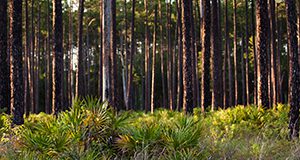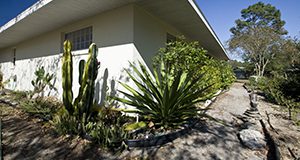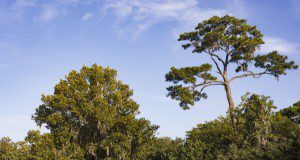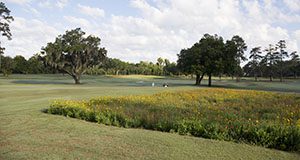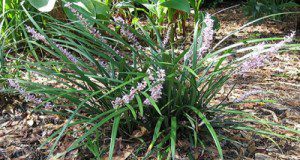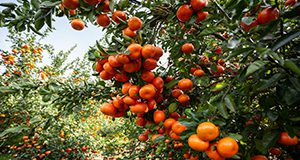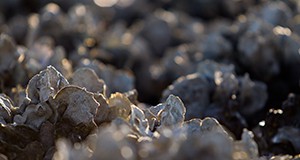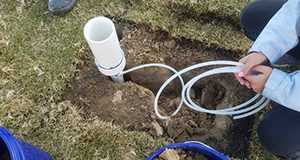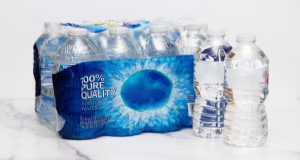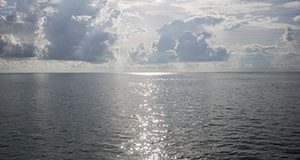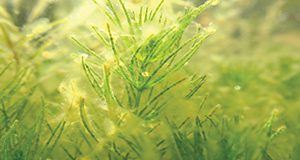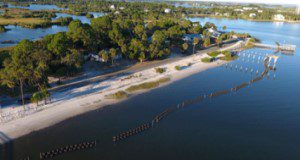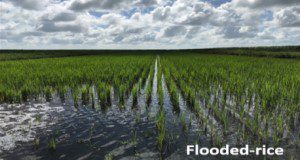Artificial reefs are constructed to provide several important ecosystem services to coastal communities and fisheries around the world, and their deployment results in significant socio-ecological and economic effects. To understand these effects, this document gives an overview of the agencies and people involved in the use of artificial reefs, how the implementation of these reefs influences their perception, and what issues are associated with their deployment. This document also specifically describes the process by which most artificial reefs are implemented in Florida.
https://edis.ifas.ufl.edu/fa231
Category: Environment
The Timber Value of an Existing Forest Stand
This 4-page publication presents a straightforward and intuitive approach based on compounding costs to determine the timber value of a forest at any stage of its development. Written by Andres Susaeta, and published by the UF/IFAS School of Forest, Fisheries, and Geomatics Sciences, March 2021.
https://edis.ifas.ufl.edu/fr435
Toward Sustainable Urban Landscape Management: Floridians’ Perceptions of Residential Landscapes and Their Maintenance Requirements
This 5-page fact sheet written by Hayk Khachatryan, Alicia Rihn, Xumin Zhang, and Michael Dukes and published by the UF/IFAS Food and Resource Economics Department is the first in a series from the Sustainable Residential Landscape Project, a study conducted in 2016 to address perceptions of landscapes in Florida, different factors that could influence the adoption of more sustainable landscape options, and ways to promote sustainable landscaping options. The Sustainable Residential Landscape Project was funded by the UF/IFAS Center for Landscape Conservation and Ecology (CLCE).
https://edis.ifas.ufl.edu/fe1090
Key Plant, Key Pests: Sycamore (Platanus spp.)
This series of Key Plant, Key Pests publications are designed for Florida gardeners, horticulturalists, and landscape professionals to help identify common pests associated with regional flora. This new 6-page publication of the UF/IFAS Environmental Horticulture Department helps identify the most common pests found on trees in the sycamore group, Platanus spp., and it provides information and general management recommendations for sycamore lace bug, bacterial leaf scorch, powdery mildew, anthracnose, and canker stain. Written by Matthew Borden, Kelly Laplante, Juanita Popenoe, Adam Dale, Caroline R. Warwick, and Brian Pearson.
https://edis.ifas.ufl.edu/ep601
The Punky Wood Ambrosia Beetle and Fungus in Florida that Cause Wood Rot: Ambrosiodmus minor and Flavodon subulatus
Ambrosiodmus minor is an invasive ambrosia beetle in the southeastern United States, including Florida. It is considered of low importance because evident economic or ecological impacts have not been observed. However, it is associated with a unique ambrosia fungus, Flavodon subulatus, which causes rapid wood rot. Wood decay caused by this association between Ambrosiodmus and Flavodon is increasing in dead trees across the introduced range, especially in Florida. This 4-page fact sheet written by Demian F. Gomez and Jiri Hulcr and published by the UF/IFAS School of Forest Resources and Conservation offers guidance in identification of the pest, the symptoms of an infestation, and explanation of the insect’s biology. In addition, we provide an updated overview of contemporary management and monitoring of the species.
https://edis.ifas.ufl.edu/fr434
Creating Wildflower Habitats in Golf Course Out-of-Play Areas
Habitat loss from urbanization and agricultural intensification is reducing native bee and monarch butterfly populations, but golf courses in urban areas present an opportunity to mitigate the negative effects of urbanization on pollinators and the environment. It is feasible to enhance a golf course’s ability to support more species and a greater abundance of wildlife by planting the 40% to 70% of acreage not used for the game of golf in wildflowers. With the most golf courses of any US state, Florida is poised to set the stage for golf course environmental stewardship. This 8-page fact sheet written by Rebecca Nestle, Grace Cope, Nicole Benda, and Adam G. Dale and published by the UF/IFAS Entomology and Nematology Department is intended to provide guidelines for Florida golf course superintendents to aid in their efforts to conserve important wildlife while reducing maintenance inputs and associated costs.
https://edis.ifas.ufl.edu/in1316
Key Plant, Key Pests: Lilyturf (Liriope muscari)
This series of Key Plant, Key Pests publications is designed for Florida gardeners, horticulturalists, and landscape professionals to help identify common pests associated with common Florida flora. This new 4-page publication of the UF/IFAS Environmental Horticulture Department provides information and general management recommendations for leaf and crown rot, anthracnose, southern blight, scales, and root rot nematodes on lilyturf. Written by Juanita Popenoe, Caroline R. Warwick, and David J. Norman.
https://edis.ifas.ufl.edu/ep600
Soil Arsenic in Miami-Dade County
This new 6-page factsheet provides information about soil arsenic (As) in Miami-Dade County, including basics, background concentrations, cleanup guidelines of soil As, and bioavailability of soil As related to plant and human health. Written by Yuncong Li, Ashley Smyth, Jonathan Crane, Christopher Teaf, and Guangliang Liu, and published by the UF/IFAS Department of Soil and Water Sciences.
https://edis.ifas.ufl.edu/ss696
Common Questions When Using Soil Moisture Sensors for Citrus and Other Fruit Trees
This guide is for Extension personnel who may encounter questions from growers about the functioning and accuracy of soil moisture sensors (SMSs) for fruit tree production. The 4-page publication focuses on two types of handheld sensors currently used in Florida for irrigation management of citrus and other trees: the transmission line oscillator (TLO) and time-domain transmissometer (TDT). Written by Eric Herrera, Sandra M. Guzmán, and Eduart Murcia, and published by the UF/IFAS Department of Agricultural and Biological Engineering, February 2021.
https://edis.ifas.ufl.edu/ae551
Oyster-Predator Dynamics and Climate Change
Oysters are one of the most important natural resources found in coastal and estuarine areas of Florida, but some Florida oyster populations appear to be declining. One possible driver of oyster population decline is increased mortality from oyster predators, including marine snails. But other environmental factors, such as changes in temperature or salinity, may also affect oysters. This 5-page fact sheet written by Gabrielle Love, Shirley Baker, and Edward V. Camp and published by the UF/IFAS School of Forest Resources and Conservation, Program in Fisheries and Aquatic Sciences describes how a changing climate may affect oysters directly but also indirectly by affecting their predators.
https://edis.ifas.ufl.edu/fa228
Design, Construction, and Installation of a Drainage Lysimeter for Use on Sandy, Well-Drained Soils under Turfgrass
Using lysimeters to collect water quality samples can provide a better understanding of nutrient or other solute migration below the surface, which can inform landscape management for environmental protection. This 6-page publication presents the materials, construction, installation, and management of a specific drainage lysimeter design in a step-by-step format. Written by Jovana Radovanovic, Eban Z. Bean, and Alexander J. Reisinger, and published by the UF/IFAS Department of Agricultural and Biological Engineering, February 2021.
https://edis.ifas.ufl.edu/ae554
Private Wells 101: Bacterial Contamination and Shock Chlorination
Private well users are responsible for the management and protection of their wells. This new 4-page EDIS publication is for Florida homeowners who are interested in learning more about their well-water system and understanding how to properly shock, or disinfect, the well if there is evidence of drinking water contamination. Written by Yilin Zhuang and Mary Lusk, and published by the UF/IFAS Department of Soil and Water Sciences.
https://edis.ifas.ufl.edu/ss700
Spatial Measurements on USGS Topo Maps

United States Geological Survey topographic maps provide a variety of geospatial measurement tools thanks to their built-in georeferencing capabilities. Georeferencing facilitates display of geographic coordinates and measurement of distances, perimeters, and areas on PDFs using the measure tools built into Adobe Reader and Adobe Acrobat. This 7-page fact sheet written by Hartwig H. Hochmair and published by the UF/IFAS School of Forest Resources and Conservation explains and showcases the use of these geospatial readout functions. It also provides background information about and assistance with estimating point coordinates on the Universal Transverse Mercator grid cast on USGS topographic maps as an optional layer.
https://edis.ifas.ufl.edu/fr433
Publicly Available Geographic Information Sources and Common Analysis Tools
Geographic information and geospatial data are vital in many practical fields, including precision agriculture, natural resources management, flood zone mapping and management, and environmental assessment. This 6-page publication introduces publicly available geospatial data, including elevation, land use, soil, satellite imagery, and other thematic maps and GIS software commonly used in spatial analysis. Written by Satbyeol Shin and Young Gu Her, and published by the UF/IFAS Department of Agricultural and Biological Engineering, January 2021.
https://edis.ifas.ufl.edu/ae550
The Ecology of Charophyte Algae (Charales)
Charophytes are a group of green algae within the order Charales. This 4-page publication provides an overview of charophyte ecology, habitat requirements, and status in the state of Florida. Written by Maximiliano Barbosa, Forrest Lefler, David E. Berthold, and H. Dail Laughinghouse IV, and published by the UF/IFAS Agronomy Department, January 2021.
https://edis.ifas.ufl.edu/ag448
An Introduction to USGS Topo Maps
Topographic maps provide both a detailed and accurate representation of cultural and natural features on the ground and a quantitative representation of relief, usually using contour lines. They can be used to address spatial questions in disciplines related to natural resources, hydrology, forestry, agriculture, or ecology. In 1879, the United States Geological Survey began to map the topography of the United States, producing new map versions of each area at semi-regular time intervals. US Topo maps are the current generation of USGS topographic maps. Unlike traditional topographic maps, the US Topo product is automatically generated from national map databases with topographic maps and produced every three years for all 48 of the contiguous United States, Hawaii, and the United States territories. They are published as freely available geospatial PDF documents that facilitate coordinate readings and spatial measurements (e.g. distance, area) through built-in georeferencing technology. This 7-page fact sheet written by Hartwig H. Hochmair and Adam R. Benjamin and published by the UF/IFAS School of Forest Resources and Conservation focuses on US Topo quadrangle download procedures and layer structure.
https://edis.ifas.ufl.edu/fr342
Living Shoreline Monitoring: How do I evaluate the environmental benefits of my living shoreline?
Living shorelines are structures made of natural materials such as oyster shell, sand, mangroves, salt marsh plants, and other organic materials built to protect properties from erosion. In addition to increasing shoreline stability, living shorelines enhance many valuable ecosystem functions. In this new 11-page publication of the UF/IFAS Department of Soil and Water Sciences, we provide homeowners, land managers, and Extension agents materials lists, protocols, and data sheets for measuring change in ecosystem function. Measuring and interpreting these measurements will help evaluate living shorelines projects as well as provide the foundation for monetarizing the value of these structures. Written by Laura K. Reynolds, Natalie C. Stephens, Savanna C. Barry, and Ashley R. Smyth.
https://edis.ifas.ufl.edu/ss694
Stormwater Pond Management: What You Need to Know about Aeration
This new 6-page document is intended to provide Floridians and their communities with information on a specific management practice in stormwater ponds: the use of fountains and other aeration approaches. These practices may provide opportunities both to improve water quality within the pond and protect downstream water quality. Specifically, this document gives basic information on fountains and the pros and cons of fountain installation and use. In addition, we provide information for pond managers or community decision makers on how to best manage ponds for effective pollutant removal in the pond and downstream water quality protection. Written by Samantha T. Howley, Steven P. Hohman, and Alexander J. Reisinger, and published by the UF/IFAS Department of Soil and Water Sciences.
https://edis.ifas.ufl.edu/ss695
Soil Health Response of Histosols to Flooded versus Dry-Fallow Conditions during Summer
Evaluating changes in soil properties associated with flooded fields during the summer months in the Everglades Agricultural Area (EAA) provides us an opportunity to assess the effect of soil management associated with flooded versus dry-fallow field conditions on Histosols. This information will be beneficial to current and potential growers farming flooded rice in south Florida, as well as Extension agents who work on rice and soil conservation agencies such as the USDA Natural Resources Conservation Service (NRCS). This new 6-page publication was written by Jehangir H. Bhadha, Jay Capasso, Abul Rabbany, Nan Xu, and Matthew VanWeelden, and published by the UF/IFAS Department of Soil and Water Sciences.
https://edis.ifas.ufl.edu/ss697
Lightning Damage to Landscape Palms
Florida is considered by some to be the lightning capital of the world. Florida has on average 3,500 cloud-to-ground lightning strikes per day and 1.2 million strikes per year. Given so many strikes, the probability of damage to certain palms is significant. Coconut palms, royal palms, and Washington palms are particularly vulnerable due to their great heights, but other tall palms may be equally susceptible. This new 6-page publication of the UF/IFAS Environmental Horticulture Department describes and includes many helpful photos of symptoms of lightning damage as well as lightning protection systems. Written by Stephen H. Brown, Douglas Caldwell, and Ralph Mitchell.
https://edis.ifas.ufl.edu/ep598
